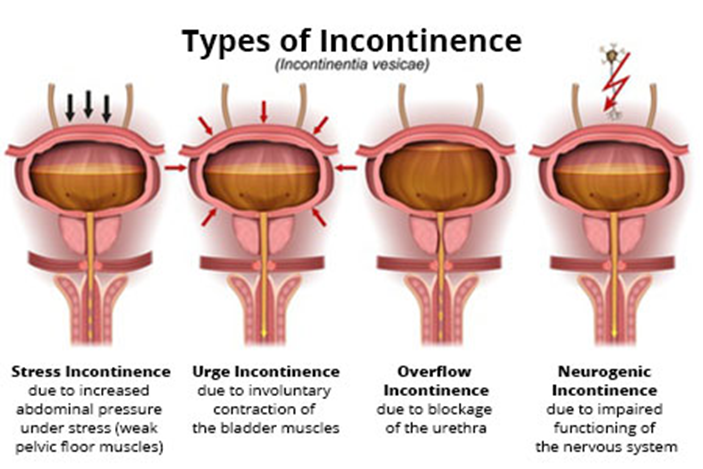A sexual health public health nurse is presenting information on sexually transmitted infections (STIs) to adolescent girls and is asked, "Why are females more at risk for STIS?" Which statements by the nurse would best answer this question? Select all that apply.
"Teenage females have sex as they feel they have power to control the sex act."
"Teenage girls are more susceptible to STIS due to their genital anatomy."
"The female genital tract makes you more sensitive to specific STI organisms.
"The teenage female anatomy is mature, leaving them more susceptible to STIs."
"Teenage females lack communication skills to negotiate for safer sex."
Correct Answer : B,C,E
A. "Teenage females have sex as they feel they have power to control the sex act."
This statement focuses on perceived power dynamics in sexual relationships and does not directly address why females are more at risk for STIs. It also oversimplifies the reasons why teenagers engage in sexual activity.
B. "Teenage girls are more susceptible to STIs due to their genital anatomy."
This statement acknowledges that anatomical differences in female genitalia, such as the presence of a cervix and a larger mucosal surface area, can make females more vulnerable to STIs compared to males.
C. "The female genital tract makes you more sensitive to specific STI organisms."
The female genital tract has a unique environment that can make it more susceptible to certain STIs, such as chlamydia and gonorrhea. This statement highlights the biological factors that contribute to females' increased risk of STIs.
D. "The teenage female anatomy is mature, leaving them more susceptible to STIs."
This statement incorrectly suggests that maturity of the female anatomy increases susceptibility to STIs. While certain anatomical features may contribute to increased risk, maturity itself is not a direct factor. Additionally, it does not provide specific information about why females are more at risk for STIs.
E. "Teenage females lack communication skills to negotiate for safer sex."
This statement addresses social and behavioral factors that may contribute to females' increased risk of STIs, such as challenges in negotiating safer sex practices with their partners. Effective communication skills are essential for discussing sexual health, boundaries, and protection, and lack of these skills can increase vulnerability to STIs.
Nursing Test Bank
Naxlex Comprehensive Predictor Exams
Related Questions
Correct Answer is D
Explanation
A. Developing most often in women in their 30s:
Stress incontinence can affect women of various ages, not specifically those in their 30s. While childbirth and hormonal changes associated with aging can increase the risk of stress incontinence, it is not limited to any particular age group.
B. Feeling a strong need to void:
This characteristic is more indicative of urgency incontinence, also known as overactive bladder (OAB), where there is a sudden, strong urge to urinate that is difficult to control. It is different from stress incontinence, which is triggered by physical movements or activities that increase pressure on the bladder.
C. Passing a large amount of urine:
This choice does not specifically describe a characteristic of stress incontinence. Stress incontinence involves the leakage of small amounts of urine during activities such as coughing, sneezing, laughing, or exercising, rather than the passage of a large amount of urine at once.
D. Sneezing as an initiating stimulus:
This is the correct characteristic of stress incontinence. Stress incontinence is characterized by the leakage of urine during physical activities or movements that increase intra-abdominal pressure, such as coughing, sneezing, laughing, lifting, or exercising. Sneezing is a common initiating stimulus for stress incontinence episodes.

Correct Answer is C
Explanation
A. Encouraging range-of-motion exercises: Range-of-motion exercises are generally encouraged post-hysterectomy to prevent complications such as blood clots and promote circulation. This action is appropriate and not contraindicated.
B. Ambulating the client: Ambulation is an essential aspect of postoperative care to prevent complications like atelectasis, pneumonia, and deep vein thrombosis (DVT). This action helps improve circulation and aids in the recovery process. It is appropriate and not contraindicated.
C. Applying elasticized stockings: Elasticized stockings, also known as compression stockings, are commonly used postoperatively to prevent deep vein thrombosis (DVT) by promoting blood flow in the legs. However, in the case of abdominal hysterectomy, if the incision site is below the level of the stockings, they may impede circulation to the surgical site and hinder wound healing. Therefore, this action may be contraindicated depending on the specific circumstances of the surgery and incision site.
D. Massaging the client's legs: Massaging the client's legs is generally not recommended post-hysterectomy, especially in the immediate postoperative period. Manipulating the legs could potentially disrupt healing tissues, increase the risk of bleeding, or cause discomfort to the client. Therefore, this action may be contraindicated.
Whether you are a student looking to ace your exams or a practicing nurse seeking to enhance your expertise , our nursing education contents will empower you with the confidence and competence to make a difference in the lives of patients and become a respected leader in the healthcare field.
Visit Naxlex, invest in your future and unlock endless possibilities with our unparalleled nursing education contents today
Report Wrong Answer on the Current Question
Do you disagree with the answer? If yes, what is your expected answer? Explain.
Kindly be descriptive with the issue you are facing.
